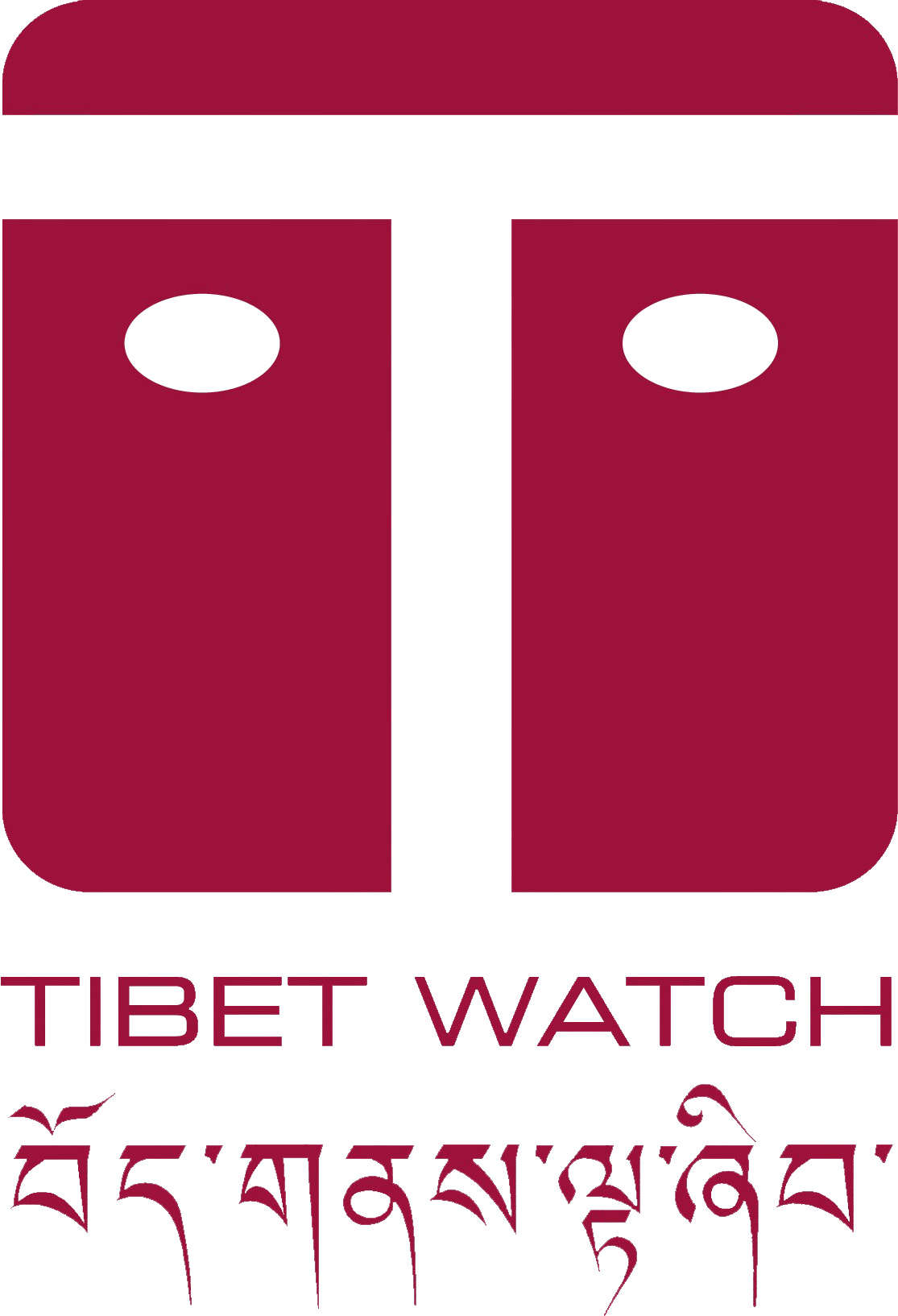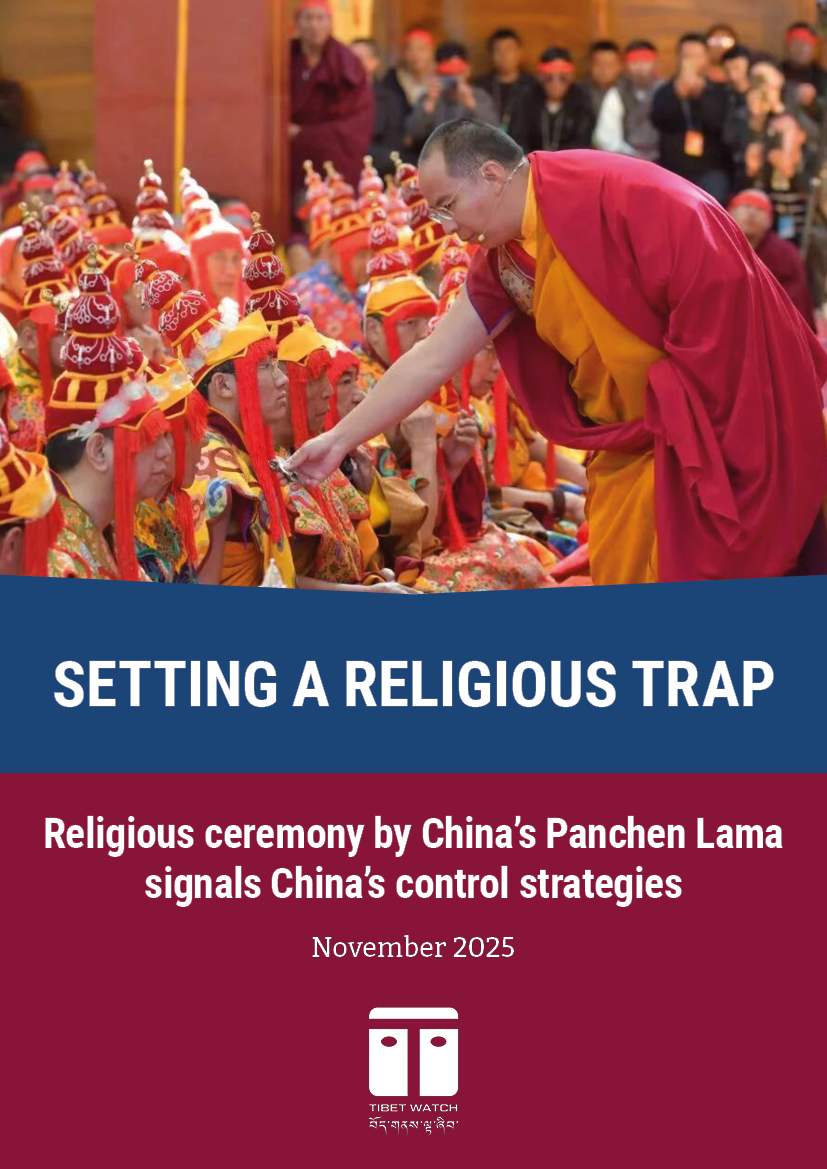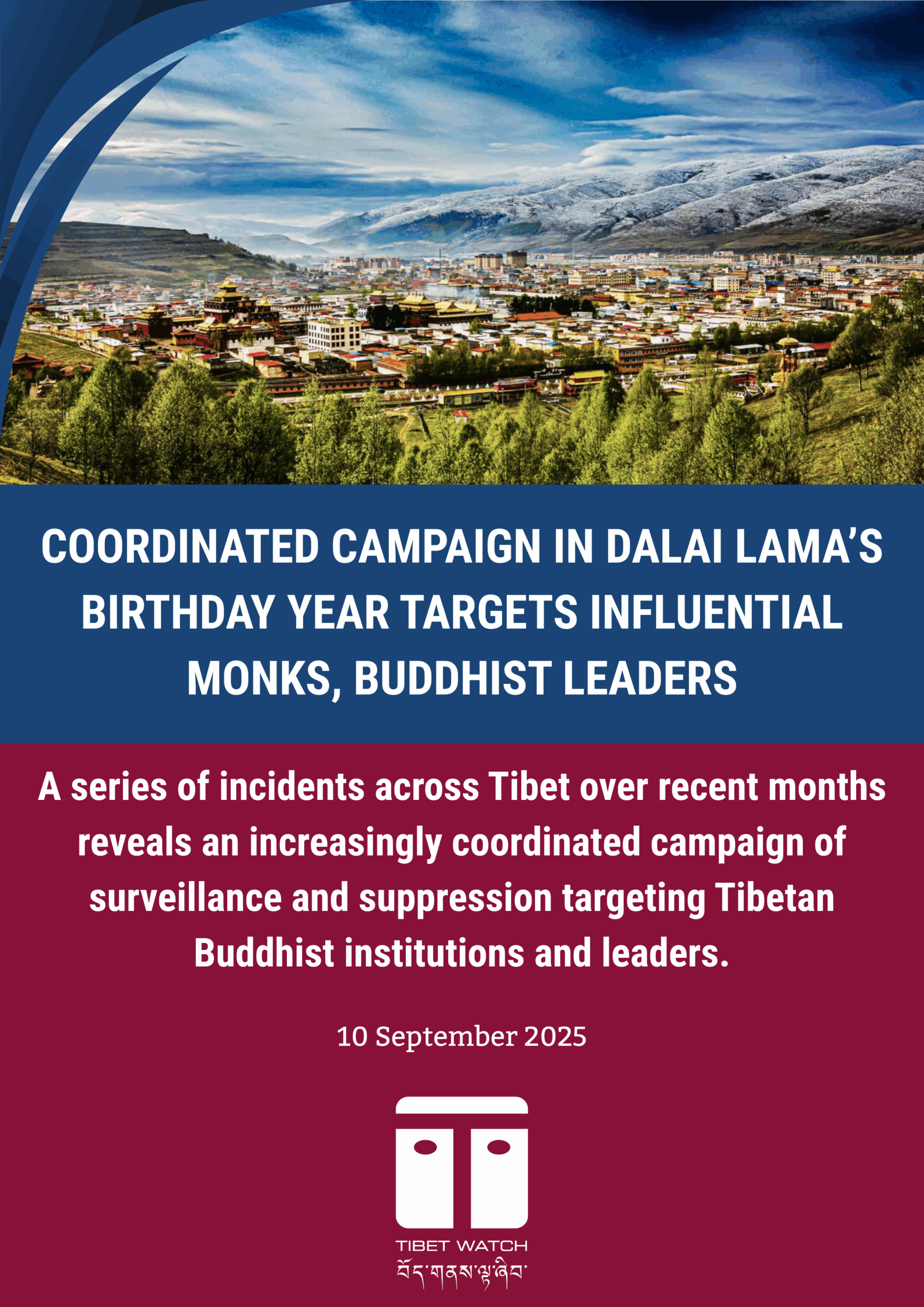
A series of incidents across Tibet over recent months reveals an increasingly coordinated campaign of surveillance and suppression targeting Tibetan Buddhist institutions and leaders. The disappearances of senior monks, raids on prominent monasteries to confiscate images of the Dalai Lama and other exiled religious leaders, and the suicide of a respected monastic leader point to a systematic effort to eliminate perceived challenges to state authority.
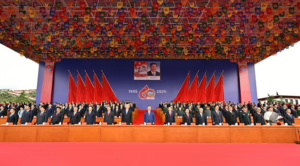
Xi Jinping presides over a highly choreographed official ceremony in Lhasa to mark the 60th anniversary of the Chinese Communist Party’s founding of the ‘Tibet Autonomous Region’, in the process eliminating any genuine Tibetan autonomy. Image from Chinese official media.
The new developments coincide with President Xi Jinping’s August visit to Lhasa, where he met with the Chinese government-recognized Panchen Lama, a meeting that underlined Beijing’s priorities of controlling Tibet and eliminating the Dalai Lama’s influence. China regards its efforts to control the succession of the Dalai Lama as a “protracted war”.
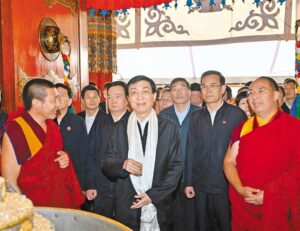
Chief ideologue Wang Huning meets the Chinese Panchen Gyaltsen Norbu on 23 August at a visit to Tashi Lhunpo monastery. Wang Huning was one of the high level delegation accompanying Xi Jinping to Tibet. Image from official media
China has launched its most comprehensive assimilation campaign in Tibet to date, extending well beyond political control of Tibet. Xi Jinping’s ‘new era’ strategy systematically targets the foundations of Tibetan cultural and religious identity through ‘Sinicisation’, education in state-run boarding schools which mainstream the Chinese language and forced demographic change.
Developments documented in this report point to a deliberate strategy to dismantle networks of influence that connect Tibet’s monastic communities to the Dalai Lama, including:
- A crackdown on the influential Kirti monastery in Ngaba, Amdo, involving a ban on photos of exile religious leader Kirti Rinpoche, who lives in Dharamsala, the disbanding of a management board overseeing education, and the disappearance of a leading scholar monk;
- The enforced disappearance of a prominent monk and language teacher in the week of the Dalai Lama’s 90th birthday on July 6;
- The incommunicado detention of two monks suspected of communication with Tibetan exiles in India in advance of the Dalai Lama’s 90th birthday;
- The continued disappearance of a senior monk from Kham, four years on, while involved in consecration rituals and pilgrimage in Lhasa;
- The suicide of a respected scholar monk on his monastery management committee in Tsolho, Amdo, following increasingly oppressive measures and constant surveillance;
- The death of the head lama of several monasteries in Chamdo following torture and imprisonment.
Crackdown at Kirti monastery
Local authorities forcibly removed and banned images of exiled religious leader Kirti Rinpoche at his monastery and affiliated Buddhist institutes in Tibet in July, the month of the Dalai Lama’s 90th birthday.

Kirti monastery in Ngaba (Chinese: Aba), the eastern Tibetan area of Amdo, present-day Sichuan, is one of the most important and influential monasteries in Tibet.
The ban on photos of Kirti Rinpoche came into effect over a week after he offered long life prayers (Tenshug) for the Dalai Lama on his 90th birthday at his exile residence in Dharamsala, India. During the high profile celebrations, 83-year old Kirti Rinpoche, who escaped from Tibet into exile in 1959, publicly awarded the Dalai Lama with the title ‘Peerless Spiritual Teacher of the Twenty-first Century’ on behalf of Tibetans from the three traditional provinces. The long life prayer ceremony in Dharamsala on June 30 was organized by Tibetans representing the Amdo region of Tibet, where his monastery is located.
In the broadening crackdown, a management board responsible for the education curriculum of the four major Kirti monasteries was suddenly disbanded. The heads of four major Kirti monasteries form the core members of the Board of General Buddhist Education of Kirti Monasteries (ཀིརྟིའི་དགོན་ཁག་གི་སྤྱི་ཁྱབ་ནང་བསྟན་ཤེས་ཡོན་འགན་འཛིན་ལྷན་ཚོགས།). These four major monasteries stand apart from the more than 30 affiliated monasteries of Kirti for their schools of dialectics and their large number of students. Thousands of monks studying Buddhism in these monasteries face an uncertain future with no alternative education systems as China further pushes aggressively for ‘Sinicisation’ of Tibetan Buddhism.
In a linked development, Geshe Lharampa Kunchok Chodrak, the acting head and teacher of Buddhist scriptures at Hortsang Kirti Monastery, remains missing since he was taken away by police in the middle of the night in December. The authorities of Sangchu county in Kanlho, Gansu Province, also seized documents and other materials relating to the education curriculum.
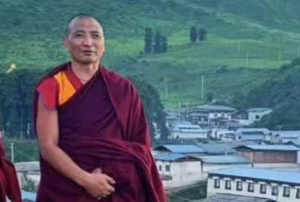
Geshe Kunchok Chodrak, the acting head and teacher of Buddhist scriptures at Hortsang Kirti Monastery, remains missing since he was taken away by police in the middle of the night in December. Image from Tibetan sources.
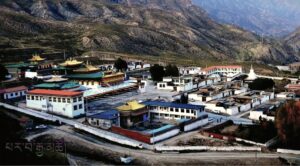
Geshe Kunchok Chodrak’s monastery, Hortsang Kirti monastery in Amdo.
Having completed the Geshe Lharampa degree from Taktsang Lhamo Kirti Monastery in 2019 – the highest form of Buddhist scholarship – Geshe Kunchok Chodrak was soon going to become the Head of Hortsang Kirti Monastery once he had taken up the oath of tantra. The Tibetan Geshe was also the deputy manager of the Monastic Management Committee at his monastery, a government-facing group that also includes Party cadres permanently stationed there.

A ban on images of Kirti Rinpoche, which came from the highest levels of central and provincial government according to Tibet Watch sources, was implemented at affiliated Kirti monastery in Ngaba (Chinese: Aba), Taktsang Lhamo in Dzoege County, pictured. Image from Tibetan sources.
A Tibetan source in exile said: “The systemic nature of repression is becoming highly coordinated. The raid of the Geshe’s residence at night was a surprise. No one knows why they came searching for him suddenly.”
Although Geshe Kunchok Chodrak’s monastery belongs administratively to Kanlho (Gannan) Tibetan Autonomous Prefecture of Gansu Province – jurisdictions created by the ruling Chinese government – its education curriculum and general exams comply with standards set by the board that functions across administrative borders.
At the time of the Dalai Lama’s 90th birthday celebrations in India, attended by faith leaders, political figures and journalists from all over the world, the BBC released rare media coverage from inside Tibet, filmed at Kirti. Describing the monastery as the heart of resistance to China, the BBC filmed visible signs of securitisation, including a police station just inside the monastery gate and a nest of surveillance cameras. The BBC footage also included comments from a monk saying that the Chinese government “has poisoned the air” in Tibet, and reflected deep concern about new laws governing the education of Tibetan children.
In the aftermath of the BBC team’s visit, an unspecified number of monks at Kirti faced interrogation and detention, although the full extent and circumstances remain unclear, according to Tibet Watch sources.
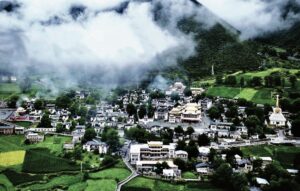
Gyalrong Tsodon Kirti monastery, in Barkham County in present-day Sichuan Province, where a ban on images of Kirti Rinpoche was implemented. Image from Tibetan sources.
The ban on images of Kirti Rinpoche, which came from the highest levels of central and provincial government according to Tibet Watch sources, was also implemented at associated Kirti monasteries in Ngaba (Chinese: Aba), Taktsang Lhamo in Dzoege County, and Gyalrong Tsodun in Barkham County in present-day Sichuan Province. Monks have now been threatened with charges of political crime if any photographs are found again. Last year, monks at Kirti monastery were barred from buying cake as part of efforts to prevent any celebration of the August birthday of Kirti Rinpoche, who lives in exile in Dharamsala.
Kirti is the site of the first self-immolation protesting Chinese rule in Tibet in 2009, when a young monk called Tapey walked out of the monastery and set himself on fire after the authorities cancelled a prayer ceremony. Tapey’s act was followed by many more teenage monks, laypeople and others from every sector of society burning themselves calling for freedom and the return of the Dalai Lama to Tibet in a wave of self-immolations across Tibet. In a testimony to the US Congress in November 2011, Kirti Rinpoche spoke about the anguish of oppression at Kirti and elsewhere in Tibet that gave rise to the wave of self-immolations.
The enrolment of monks faces increasing restrictions as a result of China’s compulsory education requiring children to enrol in state-run boarding schools. In October last year, the monastery where Kunchok Chodrak completed his Geshe Lharampa degree saw its primary school forcibly shut and over 300 of its students aged below 18 coerced to enrol in state-run boarding schools.
Geshe Kunchok Chodrak is not the only member of a monastery management committee to face severe pressure in recent months. Oppressive measures at Tsang monastery in the buildup to the Dalai Lama’s 90th birthday were so extreme that a respected scholar monk and member of the governing committee committed suicide on August 18. Fifty-two year old Shersang Gyatso (ཤེར་བཟང་རྒྱ་མཚོ།) died at his monastery in Ba (Chinese: Tongde) county, following an intensive crackdown at his monastery involving raids, searches for Dalai Lama images and a ban on traditional religious ceremonies in the weeks before the exiled religious leader’s 90th birthday.
Enforced disappearance of monk and Tibetan language teacher
A monk and Tibetan language teacher was detained by Chinese police in Xining city in early July 2025, at around the time of the Dalai Lama’s birthday, and is still being held incommunicado. Two months after his detention, his family and relatives do not know where he is and have not been allowed to see him.
Forty-eight year old Zeyga Gyatso was seeking medical treatment in Xining, the provincial capital of Qinghai, when he was detained. Zeyga Gyatso, who studied at a Tibetan monastery in India for a year before returning home in the early 2000s, had been under suspicion since 2008, when a major crackdown was imposed following protests across Tibet. In 2008 his uncle had been detained, and Zeyga Gyatso and his relatives had been summoned and interrogated by local authorities since then. According to Tibet Watch sources, Zeyga Gyatso was particularly under suspicion because of perceived links to India.
Zeyga Gyatso completed his education at Jigme Gyaltsen Ethnic Vocational High School and works as a Tibetan language teacher at Tsang Monastic (གཙང་དགོན་བཀྲ་ཤིས་རབ་བརྟན་གླིང་།) School, Ngarig Lekshal Ling (ལྔ་རིག་ལེགས་བཤད་གླིང་།).
Tibetan monks held incommunicado for six months
In early March, two Tibetan monks from Labrang monastery in the Tibetan area of Amdo (Gansu) were detained and are still being held incommunicado, according to Tibet Watch sources. Jamyang and Songpo from Labrang may have been accused of links to the Tibetan exile community in India. One of the monks, Jamyang, has subsequently been taken to hospital after a period in detention, so there are fears for his welfare.
Due to China’s total surveillance, it is now extremely dangerous and almost impossible for Tibetans to carry out the traditional Tibetan practice of making offerings at important occasions like the Dalai Lama’s birthday, or seeking blessings when a family member dies. This is part of a more comprehensive approach that targets the institutional foundations of Tibetan Buddhism’s traditional authority structure.
New information on disappeared senior monk
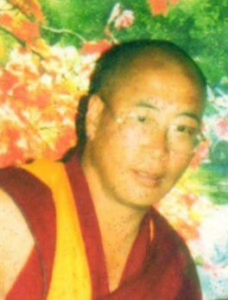
Respected Tibetan monk Dargye, who has not been seen since he was detained in 2021. Image from Tibetan sources.
Tibet Watch has received new information on the disappearance of a respected 63-year old Tibetan monk called Dargye, who was detained in August 2021 in Lhasa together with his relative Tsering and a nun named Choekyi from his village. While Tsering and Choekyi were released from police custody, Dargye’s family have received no news of his welfare and whereabouts, or why he was detained.
A Tibetan source told Tibet Watch: “Concerned family members have no information at all about Dargye’s current situation and whereabouts, which indicates how the Chinese authorities are tightening the strict and harsh crackdown in Tibet.”
Dargye, who is from Serthar in Golog, present-day Sichuan province, was living in Lhasa at the time of his disappearance, where he was making pilgrimages to Tibet’s sacred sites and conducting religious retreats. Dargye is a popular and highly qualified monk who performs consecration rituals for religious statues, scriptures, and stupas. Dargye, who has received teachings from many important lamas in Tibet, also ran a small shop in Lhasa where he provided consecration services for religious rituals.
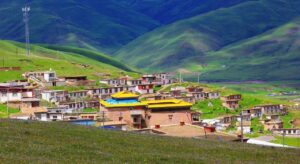
The monastery in Serta where Dargye studied as a monk. Dargye, who is from Serthar in Golog, present-day Sichuan province, was living in Lhasa at the time of his disappearance, where he was making pilgrimages to Tibet’s sacred sites and conducting religious retreats.
Dargye (དར་རྒྱས།)is from Golok Palshul Serta (མགོ་ལོག་དབལ་ཤུལ་གསེར་རྟ།), and his monastery is Serta Sera Monastery, (གསེར་རྟ་སེ་ར་དགོན་པ།) which is located in Serta County in Golog. Sera Thegchen Choekhorling Monastery (སེ་ར་ཐེག་ཆེན་ཆོས་འཁོར་གླིང་དགོན་པ།) is located in the Khekor township on the western side of Serta County. It was originally founded in 1736 by Awoe Lama Lobsang (ཨ་བོས་བླ་མ་བློ་བཟང་།) and Sangsang Palma Jinpa (སང་སང་བད་མ་སྤྱིན་པ།). It is a large monastery that combines both Nyingma and Gelug traditional Tibetan Buddhism. (དབལ་ཤུལ་གསེར་ཐར་གྱི་ལོ་རྒྱུས་གསར་བསྒྲིགས་བློ་ལྡན་མིག་གི་བདུད་རྩི།).
Death of a head lama following torture
A reincarnate lama who was head of several monasteries in Chamdo died on July 19 in prison after torture in several different prisons, according to the Central Tibetan Administration in Dharamsala. Palden Wangyal, a reincarnate lama and head of the Choegyal Monasteries in Botoed (འབོ་སྟོད་གྲོང་), Gardhab (སྒར་འདབ་གྲོང་), Ngyagle (ཉག་ལེ་གྲོང་), and Shungkor (གཞུང་སྐོར་གྲོང་) villages of Gonjo (Chinese: Gongjiue) County passed away in prison at the age of 53 after prolonged detention.
Tulku Palden Wangyal was deeply committed to the welfare of the local Tibetan community, and actively advocated for the preservation of Tibetan culture, teaching the importance of unity by discouraging internal disputes among Tibetans. His influence as a trusted religious leader concerned the authorities, and he was imprisoned, according to a CTA report on 4 September.
While he was initially held in Gonjo County prison, Tulku Palden Wangyal was later transferred to Chamdo (Ch: Changdu) in the Tibet Autonomous Region and Lhasa, where he endured increasingly harsh conditions and torture. He died in a prison in Gansu province. Due to heavy restrictions on information flow, details of when he was detained and why he was transferred to different prisons are not known.
Cyber directives underline securitisation priorities
The oppressive measures against religion are reinforced by heightened securitisation, illustrated by an internal cyber security document from Chengdu obtained by Tibet Watch. The document, issued in August, notes that in the 90th birthday year of the Dalai Lama, “we expect increased activities promoting Tibetan independence and anti-China resistance.” The document instructs officials to “Watch for secret distribution of audio, video, and printed materials entering Tibet; monitor Tibetan monks using social media or private channels to share messages about the Dalai Lama or independence” and “prevent religious followers from joining unauthorized gatherings, displaying flags, posting images, or engaging in extreme acts like self-immolation.”
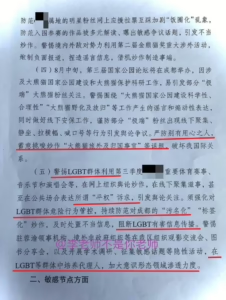
A page from an internal cyber-security document from Chengdu obtained by Tibet Watch, notes that in the 90th birthday year of the Dalai Lama, “we expect increased activities promoting Tibetan independence and anti-China resistance.”
The document also urges local authorities to heighten their vigilance during the 60-year anniversary of the establishment by China of the ‘Tibet Autonomous Region’, the province-level administrative region, on 9 September.
A pattern of disappearances and crackdown
Beijing’s approach to Tibet remains rooted in cultural assimilation, religious suppression, and authoritarian control. Last year, Xi Jinping visited Tibetan children at a Chinese boarding school in Xining, emphasizing the CCP’s ‘Sinicisation’ agenda that compels Tibetans to conform to a nationalist Chinese identity while threatening to eliminate their own. Also in 2024, powerful policy chief and ideologue Wang Huning, who accompanied Xi to Lhasa last month, visited Ngaba (Chinese: Aba), also in Amdo, and Kardze (Chinese: Ganzi) in Kham, areas with a history of protest and pride in Tibetan national identity.
The pattern of disappearances and crackdown documented in this report indicates that Chinese authorities are implementing a strategy to dismantle networks of influence that connect Tibet’s monastic communities to their religious leader in exile, or other influential leaders like Kirti Rinpoche, creating an environment of total surveillance designed to prevent any allegiance to alternative poles of authority to the Chinese Communist Party. The aim is to sever the spiritual and cultural ties that bind Tibetans to their exiled leader, while positioning the Party state to control the critical question of the Dalai Lama’s succession.
This represents an evolution from direct repression to a sophisticated matrix of control and surveillance that extends well beyond Tibet’s borders. China’s strategies now encompass monitoring and restricting financial flows to India, such as offerings for prayers to Dharamsala, targeting educational systems that maintain connections to exile communities, and eliminating visual and symbolic representations of religious authority that the Party sees as competing with its leadership.
The comprehensive nature of the approach – targeting senior monks, educational institutions, financial networks, and symbolic representations simultaneously – indicates a determination to eliminate any competing sources of religious legitimacy and authority. It also signals Beijing’s concerns over maintaining control and security in Tibet in future, and an acknowledgement that after more than 70 years of oppressive policies, it has still failed to ensure the loyalty of Tibetans.
The highly choreographed, North Korean-style welcome for Xi Jinping in Lhasa in August was in stark contrast to the outpouring of love and reverence for the exiled Dalai Lama during his birthday celebrations in India, evidence of the Tibetan leader’s continued global influence as well as the religious and secular power of Tibetan Buddhism as a socially progressive force.
